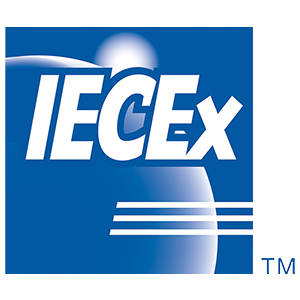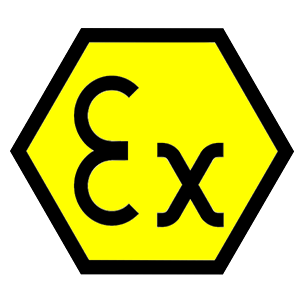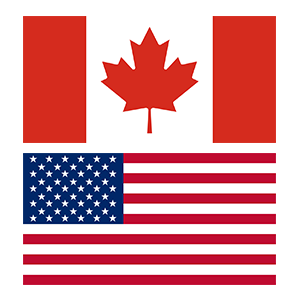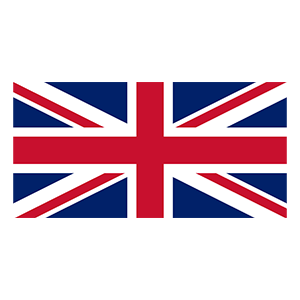Hazardous Locations
A brief intro
Potentially Explosive Atmospheres or Hazloc, as it is widely known by in the U.S.A. and Canada, are areas where there is a risk of explosion or fire, due to the presence of gases that could auto ignite, or to the presence of combustible dusts that could potentially start a fire. Places that are frequently accessed by general population, in everyday life, can also be classified as Hazardous Locations – the prime example being Gas Stations. Oil rigs, mines, chemical plants, flour mills, grain silos, pipeline transfer areas, and oil storage tankers are some of the more industrial Hazardous locations.
Based on where one is located geographically, there are different sets of prevailing Hazardous Location classifications. The most prevalent schemes are the Division system & the Zone system. IECEx & ATEX, and the newly minted UKCA Mark (UKEX Scheme), all use standards that provide guidance and protection concepts for the Zone system. U.S.A. and Canada still use the Division system in addition to providing an option to use Zone markings.
Although on the outset appearance, it may seem like the two large economic zones of the world use different Hazardous Location classifications, they are roughly equivalent. The NFPA and the Canadian Electrical Code (CEC) have specific sections (NEC 500 & CEC section 18/ Appendix J18) that detail how the Zone and Division systems are equivalent.
IECEx & Harmonization
Perhaps the most well recognized mark across the globe is the mark from the IECEx scheme. There are several countries which accept the IECEx mark, as is, for Hazloc (e.g. Australia). There are other countries where a short paperwork exercise may be needed to get an IECEx certified product into the market (e.g. Brazil, Saudi Arabia, UAE, etc.). This depends on whether a country is a full-blown member body in the IECEx scheme or if they are a member “in transition”. The vision of the scheme is to have free movement of Hazardous Location products across geographical boundaries.
Certification relies on meeting the applicable IEC 60079 series of standards in addition to manufacturers meeting the QAR (Quality Assurance Notification). ATEX harmonized standards are closely aligned with the IECEx standards, with little to no modifications. More information on critical differences between ATEX & IECEx can be found under “IECEx 01A”, which is freely available on the IECEx website. Currently, both U.S.A. & Canada are members of the IECEx scheme, and it is hoped that harmonization will eventually phase out the Division classification.

ATEX & Europe
Legislated by the EU, the ATEX directive is the letter of the law when it comes to Hazardous Locations classification and product certification in Europe. Hazardous Locations equipment manufacturers are required to comply with the ATEX directive 2014/34/EU. For higher risk zones like Zone 0 and Zone 1, manufacturers must get their products evaluated and certified to harmonized standards by an Ex NB (Notified body) in addition to having their quality systems also evaluated (Quality Assurance Notification – QAN).
Manufacturers do have an option to have their non-electrical and lower risk electrical zone products (Equipment in zone 2, Category 3) Self-Declared in their technical file. A Declaration of Conformity becomes critical for ATEX products. Although EN 60079 series of standards, closely aligned to IEC 60079 series of standards, are the main go-to for ATEX certification, the directive does not exclusively recommend using these standards to meet the directive. The intent is to meet the directive. The use of standards is a harmonized approach to satisfy the Essential Health and Safety Requirements of the ATEX Directive.

Divisions & North America
Utilized in U.S.A. & Canada, the Division scheme is among the last alternative classification to the zone system. The area can be High risk (Division 1) or Low risk (Division 2) depending on how many hours in a year the area is expected to be hazardous. The key difference in philosophy between the ATEX/IECEx & North American certification is the inclusion of “ordinary locations” safety.
The Ordinary Locations safety is not a consideration in the ATEX/IECEx world. But in North America (US & Canada), a product is required to meet one of the electrical safety standards for ordinary locations, in addition to Hazardous Locations standards. There is an exhaustive list of ordinary locations standards for different products (e.g., Motors need to meet CSA-C22.2 No.: 100 in CA & UL 1004-1 in US) which are additionally included in Hazloc certification.

United Kingdom (UKCA Mark) referred to as the UKEX Scheme
With Brexit coming into effect, UKEX Scheme now gets an honorable mention here. Evolving with time, the requirements are still up and coming but the timelines seem to have been established now. By the beginning of 2023, Hazloc equipment, components, and subassemblies coming into the U.K. shall have the UKCA mark in addition to getting a UKAS QAN (Quality Assurance Notification). Once again, requirements align closely with the IEC 60079 series of standards, with the additional requirement to meet the Equipment and Protective Systems Intended for Use in Potentially Explosive Atmospheres Regulations 2016.
In addition to all the regulations mentioned above, each country or group of countries have their own set of Ex regulations (e.g. India- PESO/DGMS; Russia/Belarus- TR CU- Customs union; China- CCC Ex; Korea – KCS). The list is pretty exhaustive, and it is in the interest of global manufacturers to include a well accomplished certification agency, like LabTest Certification, to determine options in seamlessly crossing borders and bring products to market, in the Hazloc world, in a timely and cost efficiently manner.
With our expertise and our partnerships across the globe we can be a valuable partner in getting your Hazloc products to market, while meeting all the applicable regulations.






